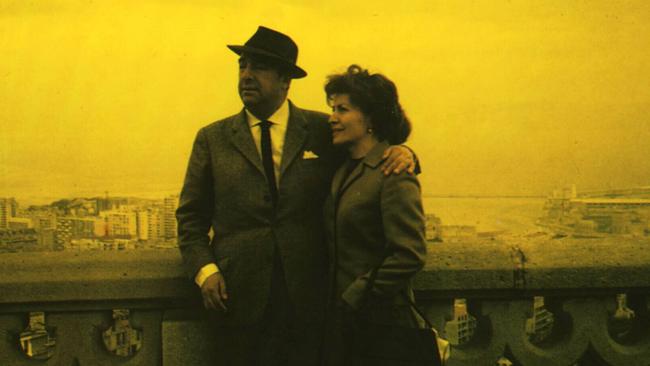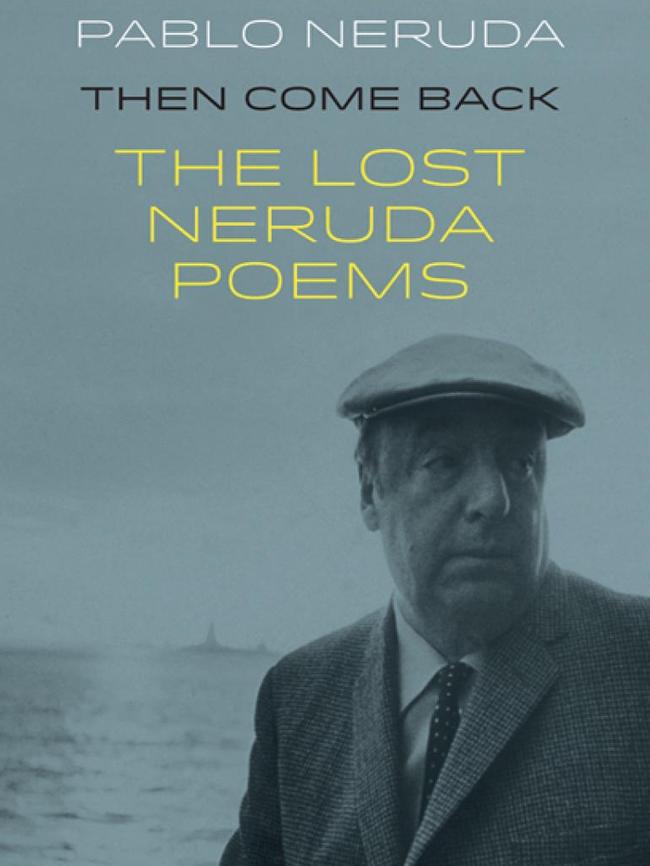Pablo Neruda’s ‘lost’ poems: music of another mind
Pablo Neruda’s ‘lost’ poems, scrawled on napkins and receipts, are worth the wait.

For Romanian poet Paul Celan, a poem’s journey to its reader is a fraught transferral. A poem, he writes, “can be a message in a bottle, sent out in the — not always greatly hopeful — belief that somewhere and sometime it could wash up on land, on heartland perhaps’’. The longing and intimacy of this metaphor is underlined when, in a passionate letter to Israeli writer Ilana Shmueli, he writes: ‘‘I translate you over to me.’’ Celan’s image of the poem making its hazardous sea crossing evokes the delicate chemistry that produces a reading — the alignment and empathy involved — and suggests a poetics of translation.
Celan’s multilingual framework — his German, Hebrew, French, Romanian and Latin, along with brilliant neologisms, narrative obliquity and visionary surrealism, and his translation of more than 40 poets — makes him a focal point in discussions of poetry’s literal and figurative translatability, or its untranslatability.

Robert Frost famously describes poetry itself as ‘‘what is lost in translation’’ and Percy Bysshe Shelley warns ‘‘it were as wise to cast a violet into a crucible that you might discover the formal principles of its colour and odour, as to transfuse from one language into another the creations of a poet’’. For many, it’s less clear. British-Lebanese novelist Naeem Murr captures this ambivalence: ‘‘Certainly literature should be translated and, of course, it can’t be.’’ In his short lyric piece Seven Minutes on Translation, Luxembourg-American poet and critic Pierre Joris, whose work includes the most substantial translation of Celan, describes the ethical drive involved in creating translations to help realise ‘‘the beauty of the other, of the poetry of the other, of the speech of all the others’’.
Faced with translating the “lost poems” of Chilean Nobel laureate Pablo Neruda, American poet and writer Forrest Gander was uncertain. Was this a case of ‘‘squeezing the last purple juices from the Neruda estate’’? These are, after all, drafts written on the backs of receipts and menus, fragments scrawled on paper napkins. Delicious as this prospect might be — like Emily Dickinson’s envelope poems or the 2014 discovery of a Sappho fragment — were the poems worth publishing?
And hasn’t Neruda’s work already enjoyed a vast readership? His Twenty Love Poems and a Song of Despair is the bestselling book of poems written in Spanish and continues to sell 100 years after its publication when the poet was 19. Neruda, who died aged 69 in 1973, is one of the few poets you might find in the average Australian bookshop, lodged between an anthology of joke poems and a leather-bound volume of John Keats, sharing this curious and delightful ubiquity only with Rumi.
The poems dispelled Gander’s doubts, and so began the process of translation, which he describes in the introduction as one starting ‘‘in humility, a sublimation of the self so extreme that the music of someone else’s mind might be heard’’. The poems are untitled. They are simply listed as poem 1, poem 2 and so on. There are 21 in total.
In one of the highlights, poem 7, Gander describes ‘‘a kind of admonitory Rilkean letter … to himself as a young poet’’. Given the pervasive reading of that young poet’s work — when readers know Neruda’s work, it is usually the work of a young man not yet 20, achily in love and at odds with poetry and with love itself — this arch self-examination is bracing. It has none of the gracious patience of Rilke’s Letters to a Young Poet and sparks with irritation at the younger self’s naive pomposity. Even his ‘‘verses’’ seem ‘‘repetitious as / grains / of oats’’.
Yet self-reproach is far from absent from the early poems. That speaker compares a lover’s beauty with ‘‘mi cuerpo de labriego salvaje’’ (translated as ‘‘my rough peasant’s body’’ by WS Merwin). These are poems of ‘‘lamento obstinado’’ (Merwin’s ‘‘stubborn lament’’), roiling with anguish, loss and absence, not so far from the ‘‘paventosa speme’’ (trembling hope) of Petrarch’s sonnets, on which the tradition of the English sonnet is built, and in which not being happily with one’s beloved is more or less mandatory.
Here, poem 7’s critical recollection of the young poet (‘‘so stupid, so remote, / so abandoned’’) turns to an imagined conversation in which he advises against selfishness and arrogance, and to wait ‘‘until the words / ripen / in you’’ before jumping in to show off: ‘‘a swan, / a trapeze artist between high phrases’’.
Attentiveness to the world and to others might help the young poet: ‘‘toughen up / take a walk / over the sharp stones / then come back’’. This is a blunt version of Rilke’s ‘‘be patient toward all that is unsolved in your heart and … try to love the questions themselves’’, yet as Gander notes, advice to work with the particular and quotidian resonates with Neruda’s Nobel acceptance speech in which he admires the poet who ‘‘prepares our daily bread’’ in a ‘‘duty of fellowship’’. This is the activist Neruda who refuses metaphor when it might distract attention from what needs to be seen, as in I’m Explaining a Few Things, about the Spanish Civil War, which refuses to produce poetic ‘‘lilacs’’ and ‘‘poppy-petalled metaphysics’’ in the face of a need to bear witness. There is no metaphor that can get closer to understanding atrocity: ‘‘the blood of children ran through the streets / without fuss, like children’s blood’’.
In the unfinished poem 9, mindful of poetry’s limitations, he examines his vanity, concluding: ‘‘I’ve done nothing / more than others, / maybe less than anyone’’. In contrast, the lost love poems are a lyrical celebration of the poet’s intricately-bound 22-year relationship with Matilde Urrutia, named throughout the collection. Instead of the moodily hypothetical love poems of inexperience, he writes about the textures of one woman’s skin and nature, the ‘‘kisses your mouth taught me’’ through which ‘‘my lips came to know fire’’. Poem 5 evokes through images of ‘‘bread, fire, blood and wine’’ a love at once spiritual and visceral, bound by appetite, creativity and generosity. Poem 3 mocks and laments the sense of loneliness Mathilde’s absence from their home creates.
Recurrent Nerudan imagery — the sky, shadows, a cormorant’s coastline flight — are woven into poem 2, with its refrain ‘‘never alone, with you’’ and its evocation, again, of shared wine, bread, love as well as ‘‘wounds, sorrow / happiness’’.
Then Come Back includes reproductions of the weathered handwritten poems with the poet’s crossings-out and notes to himself. There is precision and care in Gander’s work, and admirable exactitude, as he brings the line’s syllabic patterns and contextual resonances into English.
Somehow, at times, some of Neruda’s wildness escapes, and there is a sense of correctness tamping down something of the poems’ energy. A translation balances the poet’s rhythms with the translator’s, regardless of the latter’s humility. Yet the poems come across — Gander brings them across — as fulfilling Neruda’s sense of poetry as itself a translation: ‘‘to convey to others what we are’’.
Felicity Plunkett is poetry editor at UQP.
Then Come Back: The Lost Neruda Poems
By Pablo Neruda
Translated by Forrest Gander
Copper Canyon Press, 210pp, $46 (HB)



To join the conversation, please log in. Don't have an account? Register
Join the conversation, you are commenting as Logout